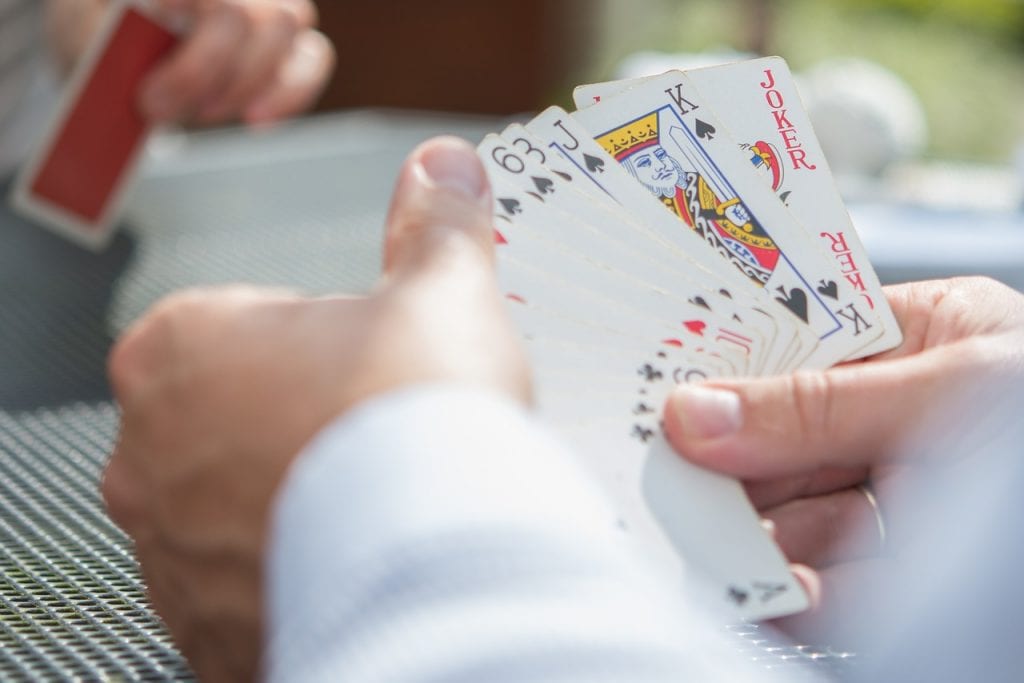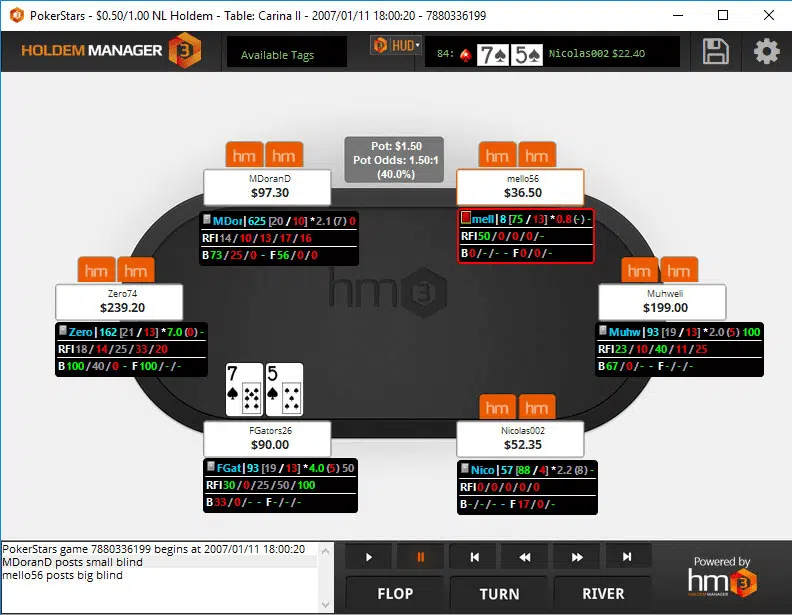While you may know exactly what the different poker hands are – we’re talking about understanding the difference between a royal flush and two pair – you may not have considered a different aspect of poker hands: probability.
Probability is what can give you the clue as to whether a hand is a good one or not.
The greater the probability of a hand, the more likely it is to turn up and the less likely it is to be the winning hand – many other players may have a similar hand as it’s easy to get.
By learning and understanding the probability or frequency of a poker hand, you can up your game, know when and how to bet and improve your game across all levels.
Throughout this article, we will take a look at what makes a good or bad poker hand in various scenarios.
As there are many different options out there, we will focus on poker hands within five-card games, so read on to find out more.
Here is what we will go through:
- Poker hands ranking
- Pre-flo probability
- Winning probability
- The terminology
- Hand to hand
- How to make your hand better
Lets start by learning the poker hand!
Tip: Try a poker tracker system to improve your poker game.
Poker hands ranking
What are the best hands in poker? Here we have compiled all poker hands and ranked them based on the best hand to the worst.
The picture shows an example of the hand and to the right is the name of such a poker hand.
 | Royal flush |
 | Straight flush |
 | Four of a kind |
 | Full house |
 | Flush |
 | Straight |
 | Three of a kind |
 | Two pair |
 | One Pair |
 | High card |
Pre-flop probability
When going through a game of poker, there are a number of different opportunities to get cards.
So, for the pre-flop, let’s take a look at the probability of landing a pair of Aces from the outset.
Essentially, the probability of getting dealt a pair of Aces in the first deal is actually just 0.45%.
If you were to continue playing poker for a period of 30 hands in an hour, this would equate to receiving a pair of Aces in the first deal every 7 and a half hours.
This probability is the same for any pocket pair. However, if we go wider and look at the possibility of getting any pair in the first deal, the probability of any pair goes up to 5.9%.
Winning probability
| Hand | Clear Hands | Frequency | Probability | Odds against |
| Royal Flush | 1 | 4 | 0.000154% | 649,739 : 1 |
| Straight Flush | 9 | 36 | 0.00139% | 72,192 1/3 : 1 |
| Poker | 156 | 624 | 0.0240% | 4,165 : 1 |
| Full House | 156 | 3,744 | 0.1441% | 693.17 : 1 |
| Flush | 1,277 | 5,108 | 0.1965% | 508.8 : 1 |
| Straight | 10 | 10,200 | 0.3925% | 253.8 : 1 |
| Three of a kind | 858 | 54,912 | 2.1128% | 46.33 : 1 |
| Two pairs | 858 | 123,552 | 4.7539% | 20.0 : 1 |
| Pairs | 1,277 | 1,302,540 | 50.1177% | 0.995 : 1 |
| Higher card | 1,277 | 1,302,540 | 50.1177% | 0.995 : 1 |
- Clear hands: Number of different ways to get this hand without counting on card suits.
- Frequency: Number of different ways to get your hand including other card suits.
- Propability: Shows what the chances are that you will get this hand in percent
Understanding the terminology
Before we dive right in, let’s take a look at some of the common terminology surrounding frequency and probability. As a starting point, you need to understand what a distinct hand is.
This is the number of ways a hand can be drawn but does not include suits.
Frequency is the number of ways to draw the hand and this includes using the same card values but from different suits. In contrast, the probability is the likelihood of actually drawing that specific hand.
When it comes to drawing a five-card hand, the probability of drawing a specific hand will vary quite dramatically.
This is because there are 52 cards with four suits to draw from.
For example, the probability of getting an Ace as your first card is set at 1 in 13 or 7.7%, the same as it is for any of the card values.
However, if you want to broaden this out to a specific suit, then getting a club of any value has a probability of 1 in 4 or 25%.
It’s important to bear in mind, though, that when a card is drawn from the deck, this can affect the subsequent outcomes.
So, if your first card is an Ace, this means three Aces remain, which means that the chance of receiving another Ace is now 3 in 51 or 5.9%, which means the odds are lower than before.
Being able to follow this and calculate the changing probabilities is very important if you want to be successful in the game.
Looking hand to hand
The problem with all of this is that as a poker player, you are not playing alone.
There are other players taking part and they are also dealt cards, which then changes the probability of any deal or hands being given.

This means you then have to consider the probability of winning with the hand you have been given as well.
For instance, if we take a look at the pre-flop probabilities of winning, then there are a whole lot of other options out there to consider.
For example, if you have a high pair such as 2 Aces and your opponent has two low cards, then the probability that you will win is 83%.
However, your opponents also have the same initial probability of getting a high pocket pair in the pre-flop.
There are numerous combinations of these first hands that could win, with receding winning probabilities down to the lowest probability if you have just two high cards while the other player has a low pair, making it just a 55% chance of winning.
But there are ways to improve the probability of your hand.
Making your hand better
Depending on what hand you start with, there are different outcomes that can then occur. By understanding the probability of these, you can then make better decisions that will affect the remainder of the game.
This is particularly important to consider as many beginner players will place more value on suited starting hands. However, these suited hands aren’t actually as likely to create flushes as other hands are.
On top of that, pairs will only make a set on the flop with a 12% probability, which is why holding on to small pairs is not actually very sensible as a starting hand.
Similarly, a pair getting you four of a kind at the flop has a probability of just 0.25%, making this not such a good option. What is a good option, though, is having non-pairing cards in your starting hand.
This is because the probability that one will pair with at least one other card from the community cards is actually an impressive 32%.
Two suited cards making a flush has a rather low 6.5% probability and therefore should not be something you aim for.
By understanding all these probabilities, you will be able to make better judgements regarding common poker events and starting hand probabilities, which will put you in a better position throughout the rest of the game.
Helpfully, there are a number of charts and sheets available that detail these probabilities and odds, which you can choose to memorise or keep as a cheat sheet when playing to help you out.
Best poker sites in NZ
-
William Hill9.5€ 300+ 50 free spins700+ gamesPayout: 1-2 daysBest feature: Real poker!18+ | Bonus & free spins wager req: 25x | Gamblingtherapy.org | Play responsibly | Terms and Conditions Apply
Related poker articles
Releated:



